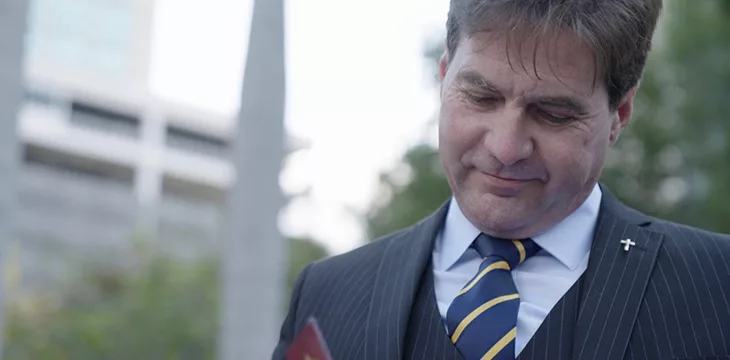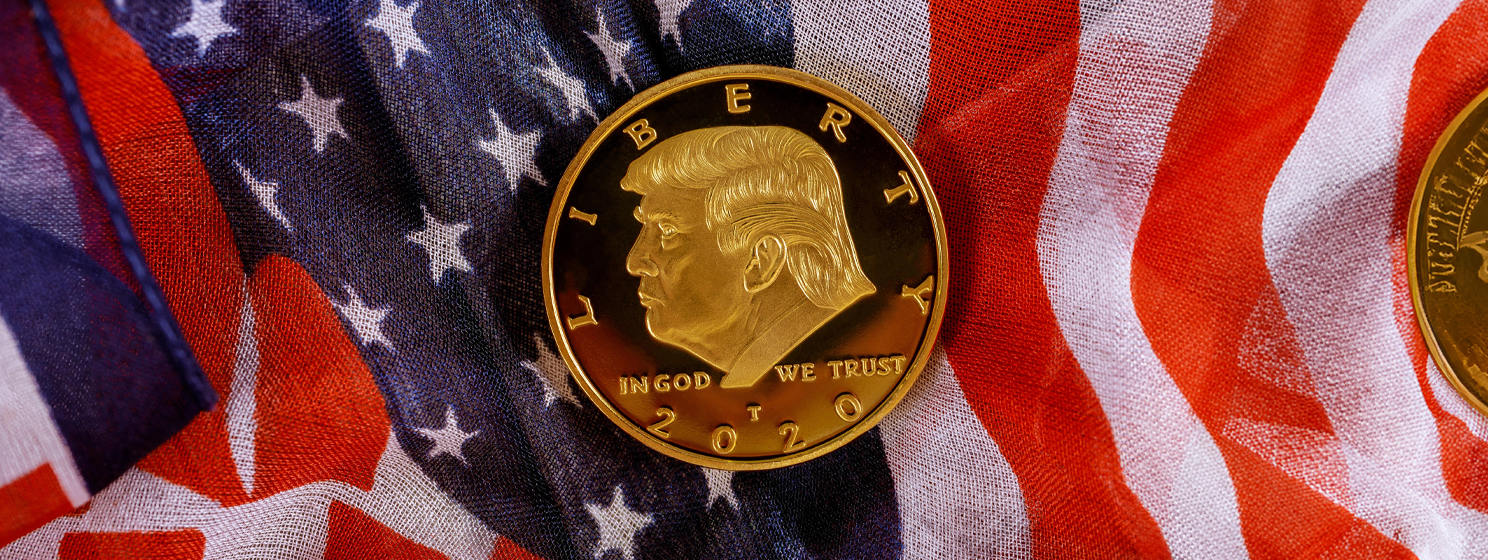|
Getting your Trinity Audio player ready...
|
Dr. Craig Wright squared off in court against the Crypto Open Patent Alliance (COPA) in September over a number of applications made by both sides, ending with a ruling last week which saw the court slap down COPA’s most significant requests—including that they be allowed to rely on two expert reports on document authenticity served in earlier cases.
Before Justice Mellor, Dr. Wright had asked the court to exclude certain hearsay evidence that COPA was seeking to use at trial. These were two reports: one produced in Kleiman v Wright from Dr Matthew Edman, and another produced in Granath v Wright by KPMG—in addition to an expert report already by Mr. Patrick Madden, arranged by COPA.
Both reports examined a number of documents and emails that were submitted into evidence in those cases, and both concluded that some of the documents had been forged or otherwise altered. Both expert report did not express an opinion on who forged or altered the documents or why; Dr. Wright has consistently maintained that many of the documents in the record are forged or altered, often in ways designed to make Dr. Wright look bad.
The court rejected the inclusion of both the Edman and the KPMG reports, remarking that “as Dr Wright submitted, the upshot of this is that COPA intends to rely at trial on expert evidence from no less than three experts in the same discipline” and that to allow COPA to do so would be “wholly duplicative.”
“COPA submitted that there would be no unfairness to Dr Wright because his expert report would only need to address the documents considered by Mr Madden. I found this submission disingenuous. If the Edman and KPMG reports remained in evidence, Dr Wright’s expert and his legal team would have to consider them.”
The court also remarked on the practical difficulty of including the reports, highlighting that it would be impossible to tell whether the document referred to in one report was really the same document referred to in the other. This, said Justice Mellor, would necessitate further expert reports.
“I cannot understand how the trial judge (likely to be me) is going to benefit from having another 7 expert reports where the only relevant material is accepted to be entirely duplicative.”
COPA had also challenged Dr. Wright’s ability to rely on expert evidence concerning his autism spectrum disorder (ASD) diagnosis. The evidence comes from renowned forensic psychiatrist Dr. Seena Fazel, professor of forensic psychiatry and director of the Centre for Suicide Research at Oxford. Justice Mellor summarizes the contentions made by Dr. Wright on the basis of Dr. Fazel’s report as:
- Dr. Wright has ASD and is therefore a vulnerable person with a disability.
- Dr. Wright’s ASD impacts his presentation in court. This means it will be important for the Judge and other court-users to be aware of this in order to ensure a fair trial.
- Given that Dr. Wright is a vulnerable person with a disability, the court will naturally wish to consider what reasonable adjustments may be appropriate in order to accommodate his ASD.
COPA challenged this on the basis that Dr. Wright had apparently been able to give testimony in prior cases—such as in McCormack and Granath—despite his diagnosis. However, Justice Mellor (noting the ‘vigorous resistance’ by COPA) honed in on the obvious point that no accommodation for Dr. Wright’s diagnosis had been made in either of those cases:
“COPA’s reliance on what occurred in previous proceedings rather begs the question. In each set of proceedings, some strong views were expressed by each Judge as to Dr Wright’s unreliability as a witness. One does not know whether the same views would have been expressed if some or more adjustments had been made.”
Justice Mellor went on to say:
“In any event, autism is a spectrum and those who suffer from ASD develop various coping mechanisms. These may well enable someone like Dr Wright to appear to speak confidently in a public environment, especially with slides as prompts. He may also be able to cope with cross-examination on aspects of the technology with which he is very familiar, but the cross-examination in this case is most unlikely to be so confined, bearing in mind that COPA challenges the authenticity of every one of the 107 principal reliance documents which Dr Wright has identified.”
The court also ruled on a series of requests for further information (RFI) by both sides. For instance, COPA asked the court to order Dr. Wright to provide more information on the precise ways that Dr. Wright’s prior expertise—on things such as incentive systems and digital currency—informed his eventual invention of Bitcoin. The court rejected that, saying that the request “gives the impression that it is simple to take each of the five (and other) concepts and plug them together to see how the white paper was devised.”
“Whoever wrote the White Paper had engaged in some novel thinking. It is often extremely difficult after the event for someone with an inventive frame of mind to pinpoint where all the ideas came from and which coalesced to give rise to the concrete description in a document like the White Paper,” he said.
The court also rejected requests for further information on a project Dr. Wright had been involved in in 2001 called ‘BlackNet’. Dr. Wright tweeted about BlackNet alongside applications to AUSIndustry and an extract from the Bitcoin white paper. Dr. Wright’s denigrators jumped on this as though Dr. Wright was claiming that the white paper and BlackNet were one and the same, but he never did, as Dr. Wright explained in argument before the court:
‘Dr Wright first submitted his Project BlackNet research paper to AUSIndustry in 2001 as part of an application for a research grant and R&D tax rebate. He obtained R&D tax rebates from AUSIndustry (but not research grant funding) for project BlackNet during the period 2001 to 2009. He subsequently and unsuccessfully sought research grant funding and R&D tax rebates in 2009 and 2010. Dr Wright updated his Project BlackNet research paper each year that he submitted it to AUSIndustry. Early applications did not contain the abstract of the white paper but later unsuccessful applications did. The image of the research paper published on Twitter is that used for a later application containing an abstract of the White Paper.”
The court accepted this reasoning and rejected COPA’s request. Justice Mellor said that “Dr Wright does not…appear to be asserting in this action that anything to do with Project BlackNet directly proves he was/is Satoshi, only that it was an early contributor to the ideas which eventually became Bitcoin.”
COPA was not entirely without victory, however. Indeed, by the time of the September hearings, Dr. Wright had already agreed to many of COPA’s requests, including the rather onerous task of identifying for COPA “all authentic drafts of the White Paper in Dr Wright’s disclosure” and to “specify the date on which each such document was created… and state whether Dr Wright is aware of any of those documents having since been altered, and if so in what respects.”
The court also granted other COPA requests, such as for an explanation as to why Dr. Wright destroyed the hard drive containing his private keys and for information on the versions of the white paper that have been uploaded to SSRN, the repository of scholarly papers known as the Social Science Research Network.
Justice Mellor’s engineering background bodes well for Dr. Wright
Beyond the rulings themselves, there are some notable details revealed in the judgment.
Interestingly, it appears that when the hearing was scheduled, the court forgot to let Dr. Wright’s lawyers know. The judgment calls this ‘regrettable’ and mentions that the result was that “for entirely understandable reasons, they were not in attendance.” The hearing was held anyway and COPA made submissions on the RFI requests. The court invited Dr. Wright’s lawyers to come to court at the earliest opportunity to make their own submissions, which took place a few days later.
Secondly, taking the judgment as a whole, one gets the impression that Justice Mellor is rather more amenable to Dr. Wright’s claims than previous judges have been. For instance, Justice Mellor acknowledges the importance and potential impact of Dr. Wright’s ASD diagnosis, where previous judges have been less open and sometimes ignored it entirely. Compare Justice Mellor’s approach with Judge Reinhardt’s reaction in Kleiman to what he perceived to be evasiveness by Dr. Wright: he attempted to hit Dr. Wright with sanctions including disallowing evidence that was at the core of Dr. Wright’s case—the sanctions were overturned by a higher Judge and Dr. Wright ultimately won the case.
A similar sign can be seen in Dr. Wright’s passing off cases against Coinbase (NASDAQ: COIN) and Kraken, also currently being administered by Justice Mellor. The parties were engaged in a preliminary dispute over the characterization of the Bitcoin system as described in the white paper, where the defendant exchanges were attempting to argue that BSV blockchain had implemented concepts that were not part of the white paper—such as what they call the ability to ‘reverse’ transactions. Dr. Wright explained in response that this was a technical misunderstanding: the functionality is not a ‘reversal’ at all but an additional entry onto the blockchain, noting that this is precisely in line with the Bitcoin white paper which refers to the “owner” and “owners” of Bitcoin, not possession.
Justice Mellor ultimately decided he was not required to rule on the dispute, but said that he had a “strong suspicion that Dr Wright’s technical explanation will turn out to be correct”—which will likely come as a shock to anyone still insisting that Dr. Wright ‘obviously’ knows nothing about Bitcoin.
Mellor’s commentary is particularly notable because of all the various judges Dr. Wright has appeared before over the years, Justice Mellor may be the one with the most technical experience. Justice Mellor was a Cambridge-educated engineer before becoming a lawyer later in his career. His specialization as a barrister was intellectual property—an area of law central to the passing off cases and more broadly to Dr. Wright’s entire legal campaign.
Given that Justice Mellor is likely to be the trial judge in the COPA identity trial and the passing off cases, that isn’t nothing.

 01-08-2026
01-08-2026 




